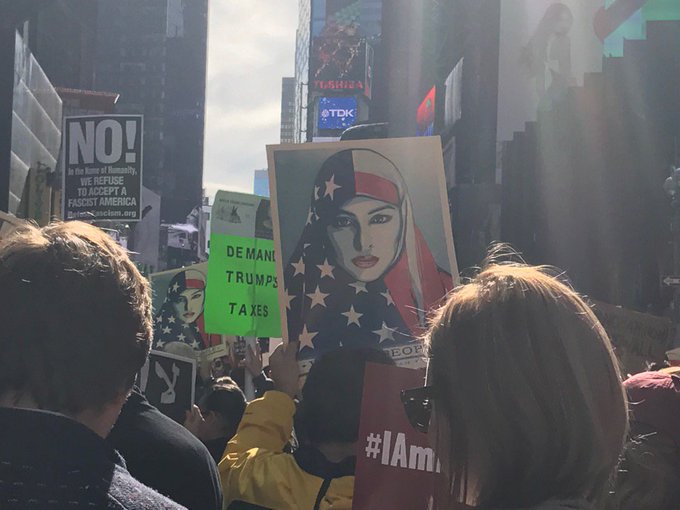Americans have been watching the Trump administration unfold for almost a month now, in all its malevolent incompetence. From morning tweets to daytime news to late-night comedy, many watch and fret and mock, and then sleep, sometimes fitfully.
Others, a large minority, lie awake, thinking about losing their families, jobs and homes. They have been vilified by the president as criminals, though they are not. They have tried to build honest lives here and suddenly are as fearful as fugitives. They await the fists pounding on the door, the agents in black, the cuffs, the van ride, the cell. They are terrified that the United States government will find them, or their parents or their children, demand their papers, and take them away.
About 11 million people are living in this country outside the law. Suddenly, by presidential decree, all are deportation priorities, all are supposed criminals, all are threatened with broken lives, along with members of their families. The end could come for them any time.
This is not an abstract or fanciful depiction. It is not fake news. It’s the United States of today, this month, this morning.
In El Paso, a woman is picked up at a courthouse where she had been seeking an order of protection; immigration agents were apparently tipped off by the man she said abused her. Near Seattle, a 23-year-old man who was protected from deportation and allowed to work lawfully under the Deferred Action for Childhood Arrivals program is picked up anyway, accused of being a gang member. He furiously denies this, and his lawyer presents paperwork suggesting that agents altered his words to falsely implicate him.
Another DACA recipient, Daniela Vargas of Jackson, Miss., barricades herself in her home after agents detain her father and brother. A mother of four, Jeanette Vizguerra, seeks refuge, alone, in a Denver church basement. A group of Latino men leaving a church-run homeless shelter near Alexandria, Va., are surrounded by a dozen immigration agents who question them, scan their fingerprints and arrest at least two of them.
President Trump’s defenders say the arrest numbers from Immigration and Customs Enforcement are comparable to those under President Barack Obama, an energetic deporter-in-chief. That may be true, for the moment, but the context is vastly different. Mr. Trump’s campaign pledges, his flurry of immigration-related executive orders, including his ban on certain travelers from Muslim countries, have a common thread. They reflect his abandonment of discretion, of common sense, his rejection of sound law-enforcement priorities that stress public safety and respect for the Constitution.
They prioritize fear instead.
ICE and the Border Patrol under Mr. Obama were ordered to focus on arresting serious criminals and national-security risks. Mr. Trump has removed those restraints in the name of bolstering his “deportation force.” He wants to triple the number of ICE agents. He wants to revive federal agreements to deputize state and local police officers as immigration officers. He wants to increase the number of detention beds and spur the boom in private prisons.
This vision is the one Donald Trump began outlining at the start of his campaign, when he slandered an entire country, Mexico, as an exporter of rapists and drug criminals, and an entire faith, Islam, as a global nest of murderers. This is the currency of the Trump aides Stephen Bannon and Stephen Miller, who have brought the world of the alt-right, with its white nationalist strain, into the White House.
Where could the demonizing and dehumanizing of the foreign born lead but to a whiter America? You have heard the lies from Mr. Trump: that immigrants pose a threat, when they are a boon. That murders are up, when they are down. That refugees flow unimpeded into the country, when they are the most meticulously vetted people to cross our borders. That immigrants and refugees are terrorists, when they are the ones being terrorized.
For those who would resist the administration, there is much to do, and not a lot of time. Congress is not a check. Democrats there are outnumbered, speaking out but waging symbolic resistance for now. Republicans are mostly split between avoiding the subject and cheering on Mr. Trump.
States and cities are freer to act. Many recognize the dangerously anti-American mood and are striving to protect their immigrant populations. They are refusing to allow their police officers to join deportation dragnets, and are readying legal representation and other aid for immigrants. The Trump administration falsely calls these places “sanctuary city” lawbreakers and threatens to withhold federal funding as punishment. It’s not yet clear what actions the administration can take, or who will win the legal battles that are bound to ensue.
And anti-sanctuary, anti-immigrant, anti-refugee sentiment is hardly confined to the federal executive branch. Governors and legislatures in red states will be blocking money to blue, pro-immigrant cities, rolling back in-state tuition and other immigrant-friendly policies, and jumping onto Mr. Trump’s all-out-enforcement bandwagon. This battle has many fronts.
The other best lever available, besides the courts and the Constitution, is people power. Protesting and public actions will embolden others to join in, and hearten the vulnerable. If senators and representatives can’t show courage, then churches, universities, schools, philanthropies, health systems, corporations, farmers and artists can.
The days of protests at airports over the Muslim ban were a magnificent surprise, a spontaneous uprising of Americans who said: This is not who we are. Think of the power in that. Think of the message sent if the “day without immigrants,” in which foreign-born workers stayed home, became a week or a month.
Then there is the secretary of homeland security, John Kelly, who — based on his testimony in confirmation hearings — understands Latin America and recognizes the folly of militarized, indiscriminate immigration enforcement. It is not yet clear where he is on the Trump-Bannon-Miller axis. But Mr. Kelly could use his power for good.
An alliance of those who recognize the threat Mr. Trump poses to the American identity can push against him, to hasten the day that the fever breaks.













